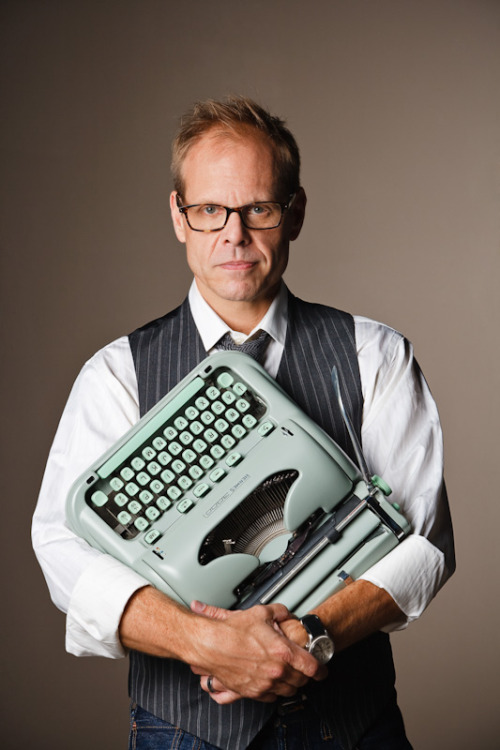reply to u/highspeed_steel at https://reddit.com/r/typewriters/comments/1krspvh/im_totally_blind_and_new_to_typewriters_wax/
Your question is a great one, but I'll go another direction since I'd dug into some of the history and details of Helen Keller's mid-century typewriters a while back. You can find some details and descriptions here (and in the associated links which includes an accessible video of Ms. Keller using a solid and sexy black Remington Noiseless standard typewriter): https://www.reddit.com/r/typewriters/comments/1ihot96/helen_kellers_typewriters/
She managed on both her Remington as well as her brailler as well as any sighted person, though obviously had someone to check her printed work.
I recently saw another heavily modified midcentury typewriter for someone who, if I recall correctly was not only blind, but had no arms. It was set up so that they could move a selector and type using a custom chin rest. Sadly, I didn't index it at the time, but it's interesting to know that such things existed for accessibility reasons.
As for Braillers, you might appreciate this recent article about a repairman in Britain who was retiring: https://www.theguardian.com/society/2025/jan/02/wed-be-stuck-alarm-as-uks-last-braille-typewriter-repairer-ponders-retirement
I've got my own brailler, which is a sleek-looking art-deco industrial piece of art with the loveliest shade of dark shiny gray paint I've ever seen on a typewriter. (I'm both a mathematician and information theorist into the areas of coding and cryptography, so Morse code, Braille, etc. are professionally fascinating to me.) I still need to take it apart and repair a few portions to get it back to perfection, but it generally works well.
As for the aesthetics, I personally enjoy the solid industrial look and feel of the machines from the 1930s-1960s. The early 30s and some 40s have glossy black enamel and machines like the Corona Standard/Silent from the 30s are low slung with flat tops that sort of resemble small pianos and just scream out "I'm a writer" with a flair for dark academia and just a hint of classical Roman design. Many of these machines come with gold tinged water-slide decals which really set themselves off against the black enamel, though on the majority of machines the gold is beginning to dim from time, wear, and uncareful application of cleaning solutions.
I love the Royal KMM, KMG, and the Remington 17, Standard, and Super-Riter for their industrial chonkiness and (usually) their glass keytops. One of my favorites is the Henry Dreyfuss designed Royal Quiet De Luxe from 1948 which always gives me the feel of what it would look like if a typewriter wore a tuxedo or the 1948 gray and chrome model which is similar but has the feel of a sleek gray flannel suit on a 1950s advertising executive prone to wearing dapper hats, smoking cigarettes, and always with a cocktail in his hand. Into the 50s and 60s almost everyone had moved to plastic keytops which I don't think are as pretty as the older glass keytops with the polished metal rings around them.
At the opposite end of that spectrum are the late 50s Royal FP and Futura 800s which have some colorful roundness which evokes the aesthetic of the coming space age. They remind me of the modern curves and star shapes of the television show The Jetsons. Similarly space-aged are the sexy curves of the silver metalic spray paint on wooden cases for the Olympia SM3 from the same period. These to me are quintessential typewriter industrial design. In gray, green, maroon, brown, and sometimes yellow crinkle paint with just a hint of sparkle in their keytops I really love the combination of roundedness and slight angularity these German designed machines provide. They have a definite understated sort of elegance most other typewriters just miss. I suspect that late-in-life Steve Jobs would have had an Olympia SM3.
There's something comforting about the 40s and 50s sports-car vibe of the smaller Smith-Corona portables of the 5 series machines in the 1950s with their racing stripes on the hood. They feel like the sort of typewriter James Dean would have used as a student—just hip enough to be cool while still be solid and functional.
Sadly into the 70s, while machines typically got a broader range of colors outside of the typical black, gray, and browns things became more plastic and angular. They also begin to loose some of the industrial mid-century aesthetic that earlier machines had. They often feel very 70s in an uncomplimentary way without the fun color combinations or whimsy that art and general design of of that period may have had in the music or fashion spaces. They make me think of politics and war rather than the burgeoning sexual revolution of the time period.
Interestingly, for me, I feel like most typewriter design was often 10-20 years behind the general design aesthetic/zeitgeist for the particular decades in which they were made.
Good luck in your search for the right typewriter(s) for your own collection.








 <br />
via
<br />
via 




















 A bumper sticker that reads: "Government Can't Hack My Typewriter" with an image of a Smith-Corona flattop.
A bumper sticker that reads: "Government Can't Hack My Typewriter" with an image of a Smith-Corona flattop.

















